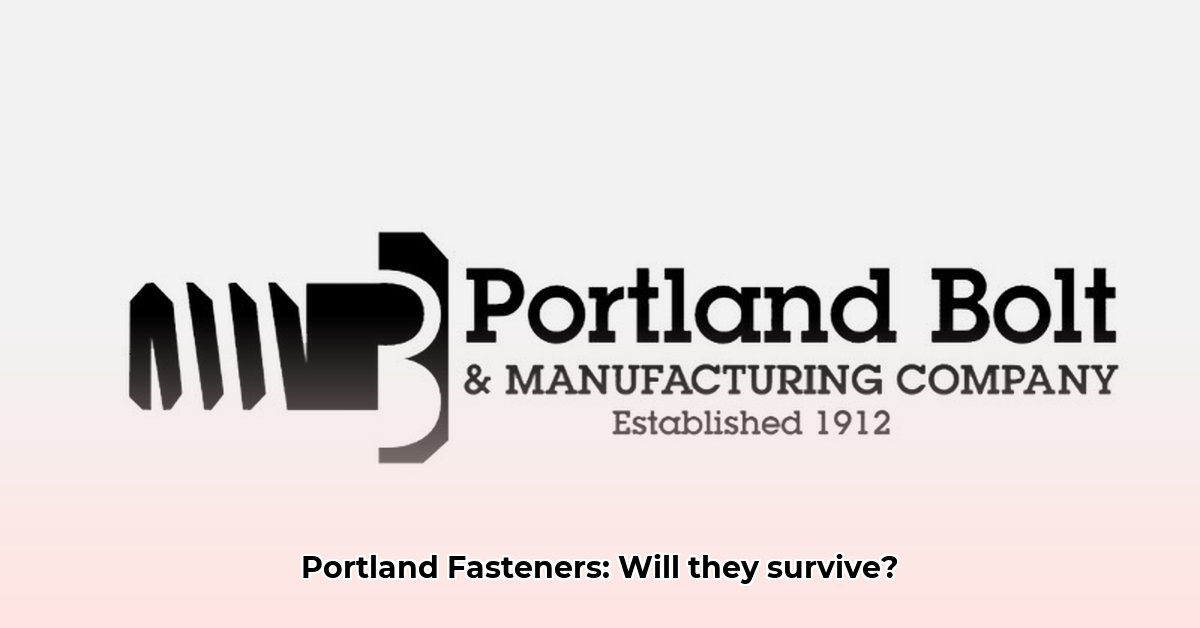
Portland's Construction Fastener Market: A Two-Player Game
Portland's thriving construction industry fuels a competitive market for construction fasteners. This analysis examines two dominant players—Portland Bolt and PF Supply—comparing their strengths, weaknesses, and market strategies to offer actionable insights for stakeholders. Understanding the nuances of their offerings is crucial for contractors seeking efficient and reliable fastener solutions.
Portland Bolt: A Legacy of Reliability
Established in 1912, Portland Bolt has built a reputation on its commitment to American-made products and rapid delivery. Their emphasis on domestic manufacturing resonates with contractors prioritizing quality and supporting local economies. Portland Bolt's coast-to-coast distribution network facilitates two-day delivery across the US, a significant advantage for time-sensitive projects. However, their product range may be less extensive than competitors.
PF Supply: A Modern Approach to Fastener Supply
PF Supply, a division of Acme Construction Supply, leverages a broader network and inventory. Their product offerings extend beyond fasteners, including tools and equipment, providing one-stop shopping for contractors. Their Beaverton location offers convenient in-person pickup, complemented by a streamlined online ordering system. A unique value proposition is their "cut & assemble" service, catering to projects requiring custom-cut materials. Power tool rentals further enhance their market appeal. Although their local delivery is excellent, nationwide delivery speed may not match Portland Bolt's.
Comparative Analysis: Portland Bolt vs. PF Supply
A direct comparison reveals key differences:
| Feature | Portland Bolt | PF Supply |
|---|---|---|
| Manufacturing Origin | Primarily US-based | Mix of sources, leveraging Acme's network |
| Delivery Speed | Emphasizes rapid, two-day US delivery | Strong local delivery; convenient online options |
| Product Selection | Focus on standard and custom fasteners | Broad selection, extending beyond fasteners |
| Unique Selling Points | Speedy US delivery, domestic manufacturing | "Cut & assemble" services, power tool rentals, extensive product catalog |
| Customer Service | Highlighted as a key strength | Customer service is a stated priority |
Data Limitations: This analysis lacks detailed pricing, market share, and customer satisfaction data, limiting the depth of comparison. Further research is needed for definitive conclusions.
Market Dynamics: Shaping the Portland Construction Landscape
Portland's construction activity significantly influences fastener demand. Trends like sustainable building practices shift preferences towards eco-friendly materials. Regulatory changes at local and national levels further impact supplier strategies and contractor choices. These factors necessitate adaptive strategies from fastener suppliers. How will these trends impact future market share? Only time will tell.
Actionable Insights & Recommendations
This analysis provides strategic guidance for key market participants:
1. General Contractors: Balance speed and selection. Consider a diversified sourcing strategy, combining domestic and broader options.
2. Subcontractors: Utilize online ordering for efficiency. Evaluate the time and cost savings from services like “cut & assemble.”
3. Construction Managers: Prioritize quality control and incorporate sustainability criteria in vendor selection. What are the long-term cost implications of choosing one supplier over another?
4. Portland Bolt: Maintain rapid delivery capabilities while investing in enhanced online ordering and perhaps expanding product diversification.
5. PF Supply: Maximize online presence and leverage Acme’s network for market expansion. Continue to refine specialized services and optimize inventory management.
Conclusion: Navigating the Future
The Portland construction fastener market remains dynamic. Success hinges on adaptability, technological adoption, superior customer service, and responsiveness to market shifts. Companies demonstrating agility and innovation will best navigate future challenges. Further research into market trends and competitive landscapes will refine our understanding and potentially lead to new predictive models.